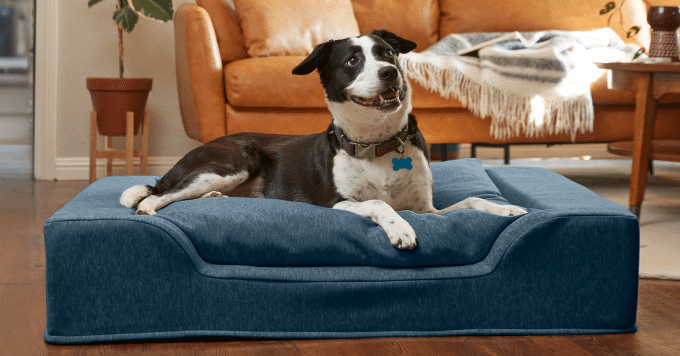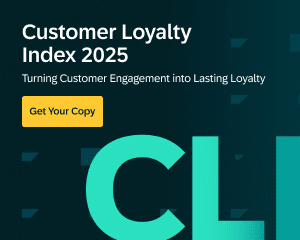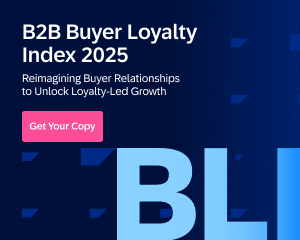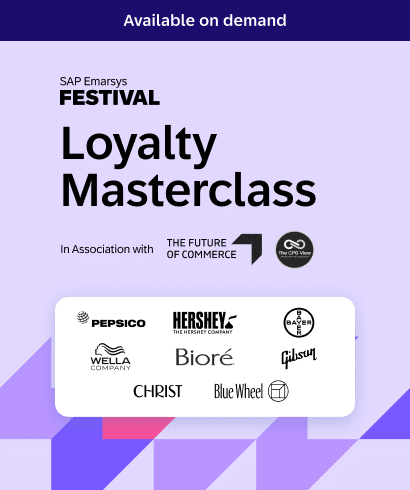What is a B2C Marketing Strategy?
A B2C marketing strategy is the plan you use to attract, engage, and convert individual consumers. Unlike B2B, where decisions often involve long cycles and multiple stakeholders, B2C strategies focus on reaching larger audiences with messages that are timely, emotional, and easy to act on. The goal is to build a journey that moves customers from first purchase to repeat buying, and ultimately, long-term loyalty.
An effective B2C strategy connects your customer data with every channel you use, so you can create a seamless, personalized experience. To make this happen, you should:
- Unify your data into a single customer view to understand who your buyers are and what motivates them.
- Segment by behavior and lifecycle stage to ensure your campaigns are relevant to each audience.
- Automate campaigns across email, SMS, mobile, and social so you’re consistent wherever customers engage.
- Reward loyalty with personalized offers and programs that encourage repeat purchases.
For example, a fashion retailer could use browsing and purchase history to recommend new items via email, send a mobile push alert when a wishlist product goes on sale, and follow up with a loyalty offer that gives customers early access to a new collection. This kind of connected, data-driven strategy creates experiences that make customers feel recognized and valued at every step.
3 Stages of a B2C marketing funnel
Many brands base their B2C marketing strategy around the structure of the traditional marketing and sales funnel.
Let’s take a look at the 3 stages you need in your funnel and best practices to follow:
- Top of Funnel (awareness). Introduce your target audience to your brand for the first time. At this stage in their journey, your target audience may well have never heard of your brand, and they might not even be aware that they need your products. This is commonly known as the research phase because your target customers are likely to be starting out looking for solutions to problems they’re facing.
- Middle of Funnel (consideration). At this stage in the funnel, your target customers have defined their problem clearly, and are now considering products that will solve that problem. This is the stage of the funnel where you target your audience with content that shows how your products solve that problem.
- Bottom of Funnel (conversion). When your customers reach the bottom of your marketing funnel, they’re primed to make a purchase. This is the place to go hard on the sell, with marketing techniques like urgency, FOMO and discount incentives. Work to set your brand apart from your competitors and use social proof like customer testimonials and reviews to set your product apart from the rest.
Once you understand how this B2C marketing funnel could work for your brand, it’s time to build a strategy to set the wheels in motion and start attracting new customers.
How to Build a B2C Marketing Strategy
Success in B2C marketing means forging emotional connections with consumers. And today, online commerce is exploding.
So, B2C commerce is synonymous with e-commerce — and if you want to build a best-of-breed e-commerce website, a number of critical steps have to be taken.
1. Create meaningful content that engages
Once you understand how consumers think when they’re in the market to buy, the next step is to attract and convert. Since automation technology will relatively “even out” the playing field within the next decade or so, as Jay Baer has discussed, the true differentiators will be (a) strategy, and (b) your ability to generate better, attention-catching, even helpful/educational content than anyone else.
Even the best B2C marketing technology won’t save a brand that feeds it lackluster content (and data, which we’ll touch on, too). When it comes to content, top priorities for B2C businesses include creating more interesting material, gaining clarity around what’s performing, and generating inspirational visuals.
“The biggest challenge for B2C marketers is reaching and engaging their customers in the digital age. Consumers are looking for content, entertainment, and connections. We are not looking for ads and interruptions. B2C marketers are struggling to break through all that noise.”
2. Understand how consumers think
You’ve got your personas established and your marketing funnel is set up. Now it’s time to get into the minds of your customers and understand what makes them tick.
In contrast to B2B customers, B2C customers are much more likely to be motivated by emotion as opposed to a clear, objective requirement.
Key decision drivers for B2C personas:
- Choice: From how, where and when they shop to the products they add to their cart, giving your customers the ability to choose their experience with your brand is a powerful motivator.
- Impulse: This is particularly true for lower RRP products. If you’re selling products for under $60, your customers could be motivated to buy on impulse, giving marketers the ability to drive sales with tactics like Fear of Missing Out (FOMO) and urgency.
- Wants and needs: While customers are motivated by impulse, need is also a strong driver. Throughout your funnel, if you can convince your audience that your products are the clear solutions to their problems, you can change that ‘want’ to a ‘need’ and increase their motivation to buy.
- Personal goals and values: Customers are motivated to buy products that align with their own ambitions, as well as their own personal values. For example, if you run a clothing brand and have a climate pledge, an environmentally conscious audience could be easily motivated to engage with your brand.
If you want more bespoke information on how your customers think, don’t be afraid to ask them.
Create site surveys to collect data, and if you have a rewards program, offer customers a discount or bonus in exchange for having a quick call with you to talk about their shopping behaviors.
3. Use an AI marketing tool
Ultimately, you need to feed your machine/technology high-quality and large quantities of customer data. This task is achieved most effectively by leveraging value-based content to get contacts to opt-in to receive your communications, discounts, or e-newsletter.
Conversion optimization is a big piece of the proverbial puzzle for revenue-generating B2C marketing strategies. Sign-up boxes used strategically on your website are one of the best ways to interest potential customers and start your relationship with them.
However, tread carefully with freebies, and mix and match them with personalized, AI-driven incentives automatically and intelligently created by machines to boost the likelihood of conversion on a 1-to-1 level.
6 Tips For a Successful B2C Marketing Strategy
Now that we’ve covered overarching strategies and key elements of successful B2C brands, let’s get into techniques and talk about how to actually acquire, retarget, and retain.
While there’s no real shortcut or secret to viral content or brand popularity — and nothing speaks louder in B2C than a quality product — there are certain elements you can implement immediately to spur growth.
1. Connect with customers on a personal level
Generic, copy-and-paste experiences no longer cut it in B2C marketing. Five years ago, personalization might have been an added bonus — but now, if you want to keep your audience engaged and attract new customers, it’s an absolute necessity.
It’s time to move away from cookie-cutter content and batch-and-blast sales messaging and adopt a personalized approach.
- Email – 74% of marketers state that personalizing their email content increases engagement, and there are a wealth of ways you can make it happen. From dynamic blocks that update based on each customer’s browsing and purchase behavior to automated flows that trigger based on web and app activity, creating personalized email campaigns that react to customer behavior in real-time has never been easier.
- Blog and video content – your Top of Funnel audience are seeking solutions to problems, and that gives you an invaluable opportunity. By creating blog and video content that tackles the topic at hand and presents actionable solutions to problems, you not only build market authority – you also show customers that you understand them on a more personal level.
- Web – if a customer came into your store every Friday, you’d recognise their face, remember the types of items they purchase and be able to give them a more tailored shopping experience. With today’s tech, online shopping doesn’t have to be any different. With e-commerce providers like WooCommerce and Shopify, you can track customers and deliver dynamic product recommendations, personalized based on previous purchases and browsed products.
Create personalized customer engagements and you won’t just drive more first-time sales – you’ll grow your customer loyalty, helping to keep them coming back.
2. Use influencer marketing
Social media is already a powerful weapon in any B2C marketer’s arsenal, but influencer marketing takes it to the next level. Influencers are content creators, typically with large online followings, that your audience are likely to view as authority figures.
By partnering with influencers, you can help:
-
- Build trust – 69% of consumers trust recommendations from influencers. When social proof is everything in B2C marketing, partnering with influencers gives your brand the added legitimacy you need to overcome new customer objections.
- Boost brand reach – influencers have broad audiences, which could include potential customers that you haven’t been able to reach effectively with your current marketing strategy. By partnering with influencers, you’ll tap into these new market segments, increasing your audience size and boosting your brand reach.
- Cultivate fresh content – when you partner with influencers, they’ll likely create content to promote your brand’s product range. With their permission, you’ll have access to a wealth of fresh content that you can use to engage customers and build trust across your own marketing channels.
Looking to find influencers for your brand? Scour your tagged posts and hashtags relevant to your products and reach out to them or their agency to discuss a potential partnership.
3. Go mobile-first
Mobile-based retail (known as mCommerce) achieved over $542.73bn in sales in 2024. When eMarketer’s Insider Intelligence predicts mCommerce’s market share to double between 2020-2025, mobile-based commerce needs to become a priority for brands.
When working on your B2C marketing strategy, considering desktop browsing alone isn’t enough – you need to consider how well your content will work on mobile devices, too. Many eCommerce platforms are mobile responsive as standard, but if you’re creating custom pages, it’s imperative that you test that they render properly on mobile devices prior to launch. This goes for email too – whether it’s web or an email campaign, content that clips off of a mobile screen is a quick way to damage brand trust.
4. Create retargeting programs
By including data-driven retargeting in your existing marketing strategy, you can give customers that have bounced prematurely another chance to buy.
Try creating highly relevant and targeted advertisements using first-party data. Ultimately, the goal with retargeting is to boost retention, customer reach, and revenue.
It’s commonplace for B2C brands to use programmatic ads to expand reach or to issue banner ads to retarget customers. These tactics are hit and miss. The better option is to use data to re-engage lost contacts where they spend their time and in ways that feel native to that platform.
We’re talking about social media.
B2C brands can use two kinds of innovative targeting options on social media:
- “Look alike” targeting to create profiles of contacts whose interests and preferences resemble those of existing and known customers
- Retargeting of existing contacts who have abandoned browsing or buying sessions on the website
Pro Tip: Use social media outlets like Facebook and Instagram to ensure retargeting is native (in-stream), relevant, and personalized.
B2C audiences certainly don’t open Instagram or Twitter because they want to be presented with ads — they’re regular people using social media to interact with friends and see updates about what people are up to.
However, by carefully and thoughtfully cultivating a brand image through social media, retailers can not only subtly work in native advertising (sponsored posts) that appear in-stream, but that also retargets individuals who have interacted with the brand elsewhere, like the website.
Social media creates a perfect opportunity to interact with and retarget on a customer’s terms, through their medium of preference. The ultimate goal for the retailer is to be viewed as a trusted insider and a valued addition to a consumer’s social channels.
5. Invest in SEO
From search to social, paid campaigns are like flicking on a lightswitch. As soon as it turns on, you start getting traffic. However, as soon as that switch is flicked off, the traffic is going to dry up.
With SEO, turning that switch on takes longer, but once it’s working, it can keep driving consistent web traffic and brand exposure for years.
Combined with the rising costs of paid social traffic, SEO is a truly effective, scalable strategy for growing your brand audience and winning new customers.
SEO gives B2C brands an unmissable opportunity to drive relevant, target traffic to their site from an audience seeking product information and solutions to their problems.
By devising a long-term SEO strategy focused around building a site’s expertise, authority and trustworthiness, you can use SEO to drive consistent and predictable site growth.
6. Leverage social media
51% of Gen Z mainly use social media to look up brands and new products, so when they search for yours, it’s important that you’re both present and active.
Social media doesn’t have to be centered solely around paid traffic – organic social media can be a great way to grow a loyal online community. Here are some tips to grow your presence organically:
- Create short-form video content around recent brand activity, your products, the benefits customers can expect to see and more.
- Use User Generated Content to build audience trust in your product offering.
- Interact with members of your target audience by following their accounts and engaging with their content.
- Partner with micro-influencers to increase your brand reach.
- Create channel-specific competitions to attract new followers and create engaging interactions with your audience.
For many brands, building an organic social media following takes time, but like SEO, it pays dividends for those willing to put in the work.
Successful B2C Case Studies
To achieve success as a B2C marketer, it’s important that you focus on reaching your consumers at the most appropriate time, while delivering perfectly tailored messages that ensure conversion and retention.
Here’s a look at five ways your B2C marketing efforts will be boosted by focusing on personalization and creating one-to-one interactions.
1. Levi’s found the right fit to improve their repurchase rate

Goal: Levi’s Brazil aimed to enhance customer retention and repurchase rates, moving customers away from price sensitivity. The challenges included automating personalized campaigns at scale, integrating online and offline data, operating with a small team, and deepening their understanding of customer insights.
Solution: To address these challenges, Levi’s Brazil partnered with SAP Emarsys and Driven. CX. This partnership allowed them to maximize their use of customer data, improve their understanding of customer behavior, and enhance the personalization and automation of their marketing efforts. They implemented strategies such as welcome emails, abandoned cart reminders, back-in-stock notifications, and price drop alerts.
Impact:
- +30% of results share attributed to Emarsys implementation
- +32% in revenue generation
- +7% increase average order value in 5 months
- +15,000 customers with repurchase and engagement tactics
2. Petco’s strategy keeps pet lovers coming back

Problem: Petco Mexico wanted to deliver a seamless omnichannel customer experience that integrated online and offline data but struggled due to the limitations of their previous platform, Mailchimp, which couldn’t scale with their growing business.
They also needed to automate personalized campaigns across multiple channels despite having a small team. They needed a robust solution that could support their high volume of customers and deliver highly personalized engagements effectively.
Solution: With support from the Emarsys team, Petco reimagined their email programs and connected their key marketing channels, such as email, web, digital ads, and mobile apps, into a cohesive omnichannel customer experience.
They also linked their loyalty program, which accounts for 92% of their purchases, into this integrated system. The solution enabled Petco to maximize their marketing technology investment and better understand their customers through advanced analytics and personalized, data-driven engagements.
Impact:
- +20% increase in revenue from active customers within 90 days
- ~300X return on ad spend
- 15% increase in won-back customers
- 31% increase in overall revenue
- +40,000 new monthly users
- 500,000 average monthly users
How SAP Emarsys Supports B2C Marketing
B2C success today depends on connecting with customers in ways that feel personal, consistent, and immediate. SAP Emarsys is built to help brands do exactly that — turning customer data into insight, delivering experiences across every channel, and scaling personalization with AI.
In the following sections, we’ll explore how Emarsys helps you:
- Build a single view of the customer and use it to power smarter campaigns.
- Put mobile at the center of your omnichannel strategy.
- Apply AI to personalize at scale and predict what customers need next.
Together, these capabilities give you the foundation to drive loyalty, revenue, and long-term growth.
Related Content: 4 B2C Marketing Strategies to Help You Build Your Brand
Use data to truly understand your customer
Personalization starts with insight. Without a clear picture of your customers, including who they are, what they care about, and how they engage across channels, your marketing will always fall short.
That’s why data-driven planning is essential for B2C brands. By leveraging real-time customer data, you can:
- Identify preferences and behaviors that shape buying decisions
- Predict future actions with greater accuracy
- Deliver the right message on the right channel at the right time
Data-driven marketing empowers you to move beyond assumptions and create campaigns that feel relevant, personal, and timely — the level of personalization your customers now expect as standard.
Ensure your omnichannel strategy includes a strong mobile presence
Mobile has become the center of how customers interact with brands. More than half of all e-commerce sessions happen on mobile, and behaviors like showrooming — browsing in-store while comparing prices online — are now common. In fact, 84% of shoppers check Amazon before purchasing anywhere else.
Customers also use their phones in-store to share on social, check in at locations, and browse product reviews in real time. If the mobile experience is slow, inconsistent, or confusing, you risk losing them at the moment they’re ready to buy.
To build mobile strength into your B2C strategy:
- Clarify the role of your app: Decide whether your mobile app is primarily for loyalty, e-commerce, or brand engagement and optimize the experience around that purpose.
- Create channel consistency: Make sure the journey flows seamlessly from email to mobile web to app. Discounts, loyalty rewards, and product availability should match across every mobile touchpoint.
- Personalize on the go: Use behavioral data to trigger real-time push notifications, in-app messages, and location-based offers that capture intent in the moment.
- Explore partnerships and innovation: Mobile competition is intense. Stand out with exclusive app-only products, strategic retail partnerships, or integrated social shopping features.
A strong mobile presence means making every mobile interaction feel connected, effortless, and valuable for the customer.
Leverage AI to optimize your B2C marketing strategy
AI has become a core driver of modern B2C marketing. By analyzing massive volumes of customer data in real time, AI can spot patterns, predict behavior, and help brands respond with personalized experiences at scale.
With AI in place, you can:
- Predict customer needs: Anticipate when a shopper is likely to reorder, churn, or respond to an offer.
- Deliver 1:1 personalization: Tailor product recommendations, content, and incentives to each customer’s unique profile.
- Automate decisions in real time: Adjust pricing, offers, or channel mix based on customer signals as they happen.
- Optimize performance continuously: Test and refine campaigns faster than manual methods allow.
For example, an apparel brand could use AI to identify which customers are most likely to buy during a seasonal sale, automatically trigger personalized offers across email and SMS, and then retarget those who don’t convert with tailored social ads. This creates a seamless journey that feels personal while also driving efficiency and ROI.
Why is Automation so Important for B2C Marketing?
For B2C marketers, scale is both the biggest opportunity and the biggest challenge. You’re engaging with thousands, sometimes millions, of customers across email, SMS, push, social, and web. Managing that manually is impossible. This is where marketing automation becomes essential.
Automation ensures your campaigns are timely, relevant, and consistent without demanding constant manual effort. With the right workflows in place, you can:
- Trigger real-time journeys like welcome series, abandoned cart reminders, and replenishment campaigns.
- Respond instantly to behavior — for example, sending a loyalty reward when a shopper makes their third purchase.
- Maintain consistency across channels, so customers experience the same message whether they open an email, tap a push notification, or browse your site.
- Free up time to focus on strategy and creativity instead of repetitive tasks.
Think of automation as the engine that keeps your customer engagement running smoothly. AI may power the intelligence that decides what message to send, but automation ensures it’s delivered to the right person, at the right moment, through the right channel.
With SAP Emarsys, you can launch pre-built automated lifecycle journeys in days, not months, giving you faster time to value and the ability to scale personalization without adding more resources.
Related Content: 11 Best Examples of B2C Marketing Automation
Final Thoughts
Building a B2C marketing strategy from scratch can seem like an intimidating task with a lot of points to consider and even more moving parts. However, when online shopping is both the present and future for e-commerce brands, having a plan to attract, convert and retain customers is nothing short of essential.
By applying the tactics we’ve discussed, your B2C brand stands a solid chance of breaking through the noise. B2C marketing strategies that earn attention, convert website visitors, and keep them coming back are the ones that will win moving forward. The only question now is: are you up for the challenge?







